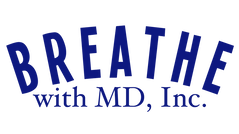What is assisted or mechanical ventilation?
Assisted ventilation or mechanical ventilation is a method to augment or completely replace the effort of breathing (depending on the individual's level of function). It’s a means for the user to inhale enough air to fill the lungs and can aid in exhaling. Devices prescribed for those living with Neuromuscular Disease (NMD) to assist with their ventilation (moving air into and out of the lungs) include bi-level devices (i.e. BiPAP or BPAP) and portable ventilators.
Many who live with NMD begin to use mechanical ventilation only at night to help sleep breathing, which is shallower and requires more breathing muscle effort. When used with the appropriate settings for the individual, assisted noctural ventilation will rest the breathing muscles and can correct gas exchange abnormalities.
If the breathing muscles weaken further, daytime or continuous ventilation will likely be required. If you ask individuals living with NMD who use ventilation support, whether part-time or continuously, you will find that overwhelmingly, they report it to be an enhancement to their quality of life and that it resolves most or all of their fatigue. Assisted ventilation can provide an increase in independence and energy level, and it can improve overall health and wellness.
Types of Mechanical Ventilation
There are two ways of receiving mechanical ventilation: non-invasively and invasively. Non-invasive ventilation (NIV) uses a mask (i.e. full face, nasal, or nasal pillows) or another type of mouthpiece interface (i.e. angled mouthpieces or straw) that can be wheelchair-connected via gooseneck tubing to deliver air from a portable ventilator to ventilate the lungs (move air into and out of them). Non-invasive ventilation does not require a surgical procedure.
Note: Mouthpiece ventilation requires a portable ventilator with onboard batteries. Daytime non-invasive ventilation via mask requires a battery or batteries for use with a portable ventilator or bi-level device.
Invasive ventilation delivers air via tubing from a ventilator through a tracheostomy, a surgically inserted hole in the windpipe (trachea). The appropriate type of ventilation depends on the individual, their medical needs, and their choice. For example, non-invasive ventilation can be an effective means of mechanical ventilation for many, while other individuals may be advised to have a tracheostomy because of advanced bulbar muscle weakness (weakening of muscles used for speaking, chewing and swallowing), severe lung infection, or other factors. Invasive ventilation is sometimes a choice by the individual living with NMD, for example when the individual cannot tolerate or does not want continuous use of non-invasive ventilation masks.
Medical Literature Supporting Use of Mechanical Ventilation
There is a wealth of information available to support the use of mechanical ventilation in those living with NMD. Much of the earlier information is found in resources on Duchenne MD and ALS. However, over the last few years, an increasing number of nonprofits for specific forms of NMD and subtypes of a particular form of NMD have been sharing detailed information on respiratory muscle weakness on their websites and in the form of care guides. As a result, more awareness exists about the use of this intervention as a life-saving measure and an enhancement to quality of life.
Below are excerpts from medical literature that support the use of bi-level ventilation. Some explain the contraindications of CPAP and supplemental oxygen without the use of mechanical ventilation.
"Nocturnal nasal intermittent positive pressure ventilation with bilevel positive airway pressure generator or mechanical ventilator has been used successfully in the treatment of sleep-disordered breathing and nighttime hypoventilation in patients with DMD and other neuromuscular disorders (48–50). The level of positive pressure required to eliminate obstructive apneas or hypopneas and normalize ventilation and nighttime oxygen saturation must be determined in the sleep laboratory or with careful bedside monitoring and observation. Serial evaluation and adjustment of nasal intermittent positive pressure ventilation (NIPPV) is necessary, as the patient’s requirements change with time (49). Nocturnal NIPPV in DMD has resulted in apparently improved survival (46, 51), improved quality of sleep, decreased daytime sleepiness, improved well-being and independence, improved daytime gas exchange, and a slower rate of decline in pulmonary function compared with nonventilated control subjects (6, 46, 47, 50, 52–54)."
"Nasal continuous positive airway pressure (CPAP) is likely to be limited utility in patients with DMD, and only in those with obstructive sleep apnea syndrome but with normal nocturnal ventilation. In cases of hypoxemia due solely or partially to hypoventilation, support with BiPAP or a volume ventilator should be considered. As hypoxemia in DMD is usually a manifestation of hypoventilation, treatment with oxygen without concurrent supplemental ventilatory support should be avoided. Negative pressure ventilators can lead to upper airway obstruction in patients with DMD, possibly due to the lack of synchrony between inspiration and vocal cord abduction (52, 56)."
Reference: Respiratory Care of the Patient with Duchenne Muscular Dystrophy ATS Consensus Statement https://www.atsjournals.org/doi/full/10.1164/rccm.200307-885ST?url_ver=Z39.88-2003&rfr_id=ori%3Arid%3Acrossref.org&rfr_dat=cr_pub%3Dpubmed
"Device settings to set up bi-level support with a backup rate will vary, but pressures are usually set with an expiratory positive airway pressure starting at 4 cm H2O and an inspiratory pressure adjusted to produce a tidal volume of 6–8 mL/kg. Most of the devices give volume readouts in real time or they can be downloaded from overnight recording. A backup rate of 10–12 breaths is often used, but this can be adjusted per patient comfort.22 Inspiratory pressure can be increased gradually if symptoms or elevated CO2 levels during the daytime persist. Inspiratory positive airway pressure levels of 20 cm H2O or more are occasionally needed. If appropriate settings cannot be achieved in the out-patient setting, in-lab titration sleep studies can be arranged.9"
Reference: Respiratory Care of Patients With Neuromuscular Disease https://rc.rcjournal.com/content/64/6/679
To learn more about equipment options for managing breathing muscle weakness, see "Equipment Options for Cough Augmentation, Ventilation, and Noninvasive Interfaces in Neuromuscular Respiratory Management" Louis J. Boitano Pediatrics 2009;123;S226-S230 DOI: 10.1542/peds.2008-2952F (attached below).
| respiratory_management_equipment_options.pdf |
